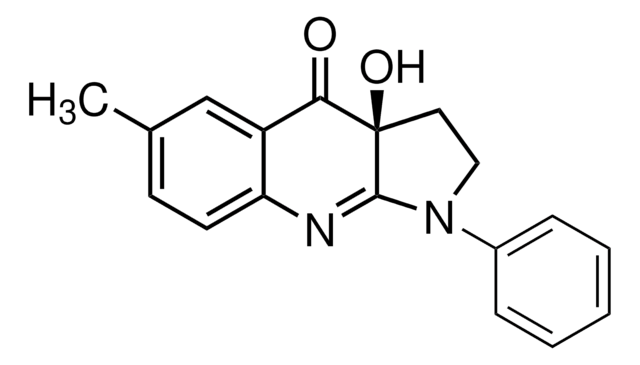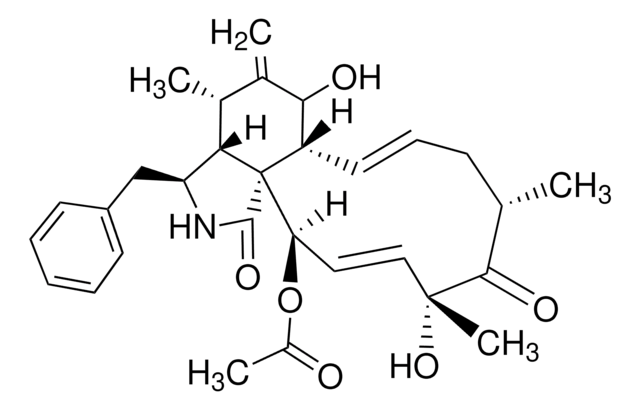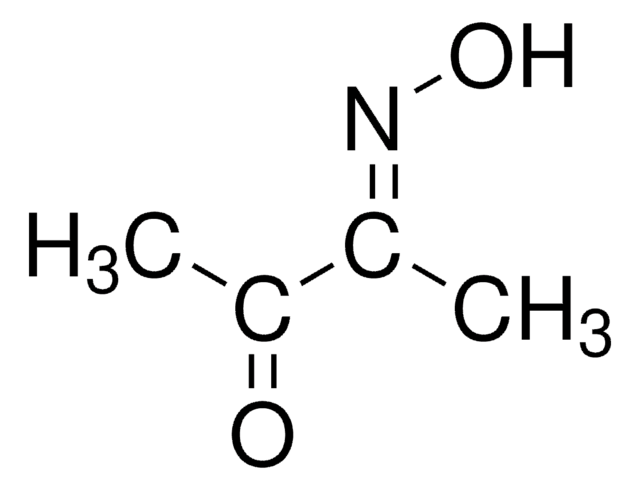203391
(-)-Blebbistatin
≥98% (HPLC), solid, ATPase inhibitor, Calbiochem®
Sinônimo(s):
(-)-Blebbistatin
About This Item
Produtos recomendados
Nome do produto
(-)-Blebbistatin, The active enantiomer of (±)-Blebbistatin that accounts for the inhibitory activity towards ATPase and myosin II-dependent cellular processes.
Nível de qualidade
Ensaio
≥98% (HPLC)
Formulário
solid
potência
2 μM IC50
fabricante/nome comercial
Calbiochem®
condição de armazenamento
OK to freeze
protect from light
cor
yellow
solubilidade
methanol: 1.5 mg/mL
100% DMSO: 100 mg/mL
90% DMSO: 75 mg/mL
Condições de expedição
wet ice
temperatura de armazenamento
−20°C
cadeia de caracteres SMILES
N2(CC[C@@]3(C2=Nc4c(cc(cc4)C)C3=O)O)c1ccccc1
InChI
1S/C18H16N2O2/c1-12-7-8-15-14(11-12)16(21)18(22)9-10-20(17(18)19-15)13-5-3-2-4-6-13/h2-8,11,22H,9-10H2,1H3/t18-/m1/s1
chave InChI
LZAXPYOBKSJSEX-GOSISDBHSA-N
Descrição geral
Ações bioquímicas/fisiológicas
Embalagem
Advertência
Reconstituição
Outras notas
Shu, S., et al. 2005. Proc. Natl. Acad. Sci. USA102, 1472.
Kovacs, M., et al. 2004. J. Biol. Chem.279, 35557.
Straight, A.F., et al. 2003. Science299, 1743.
Informações legais
Código de classe de armazenamento
11 - Combustible Solids
Classe de risco de água (WGK)
WGK 3
Certificados de análise (COA)
Busque Certificados de análise (COA) digitando o Número do Lote do produto. Os números de lote e remessa podem ser encontrados no rótulo de um produto após a palavra “Lot” ou “Batch”.
Já possui este produto?
Encontre a documentação dos produtos que você adquiriu recentemente na biblioteca de documentos.
Nossa equipe de cientistas tem experiência em todas as áreas de pesquisa, incluindo Life Sciences, ciência de materiais, síntese química, cromatografia, química analítica e muitas outras.
Entre em contato com a assistência técnica








